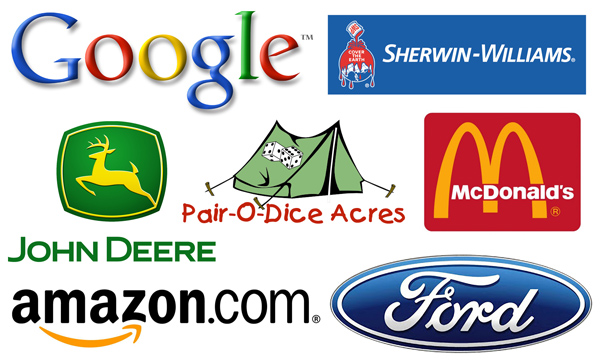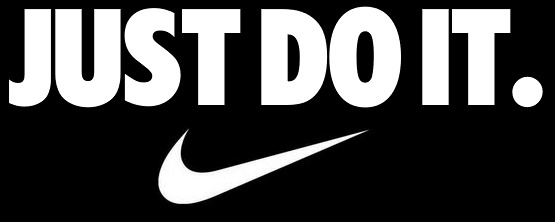There is a lot of buzz about branding these days. In fact, there is so much indiscriminate use of the term that it sometimes sounds like marketing’s latest pet rock. When properly orchestrated, nothing could be further from the truth. Proper branding can make the difference between success and failure. It is the combination of many facets of marketing, where the whole is greater than the sum of its parts.
Your brand is what differentiates you from your competitor across town or down the road. In fact, it is the founding principle behind successful franchises from Hilton to KOA. It is the reason behind the word associations between “four wheel drive” and “Jeep”, “golf clubs” and “Callaway”, and “ketchup” and “Heinz”. It should be your goal to establish that same degree of name association with camping in your area.
Probably the first step in the creation of brand identity is the design of a distinctive logo. In the 18th and 19th centuries, logos were little more than visual icons. Most business was local, and much of the population was illiterate. An icon of a tooth identified you as the town dentist, and icon of a mortar and pestle identified you as the town druggist, and the icon of a horseshoe identified you as the town farrier or blacksmith. In the early 20th century, as businesses began to serve broader markets and grow beyond single locations, a more distinctive identity became necessary. Simple icons became replaced by distinctive and carefully crafted logos. Think of some of the distinctive logos that have withstood the test of time, from Coca-Cola to Kodak, Ford to McDonald’s, or Sherwin-Williams to John Deere. With one look at their logos, there is no chance of confusing any of these well-established companies with any of their competitors.
The recently released 2014 BRANDZ Report from Millward Brown lists the 100 most valuable global brand names. The top 10 are Google, Apple, IBM, Microsoft, McDonald’s, Coca-Cola, Visa, AT&T, Marlboro, and Amazon. Keep those highly recognizable and distinguished brands in mind when thinking about the branding of your own business.
It All Starts With Your Logo
A successful logo may sometimes be simple, but it will always be distinctive and it should never be cluttered. As the common element of your branding campaign, avoid skimping on your logo design. It should never be delegated to one of your children who happens to have “an eye for graphic design”, and it will rarely fall within the realm of expertise of the marketing person on your staff. In addition, steer clear of online “logo factories”, where the assignment will be subcontracted to somebody who has no understanding of your business or industry.
When entering into a logo design project, provide the artist with as much input as possible. Are there already colors that are identified with your business? Are there colors and fonts that you really like or intensely dislike? Are there two or three key design elements – avoiding clichés – that might summarize the distinctive appeal of your business? Expect your logo designer to present you with several initial concepts that incorporate your input, but then carry things to the next creative level.
There should be plenty of back-and-forth communication between you and your designer during a process of fine-tuning a final concept. In the end, you want a logo that is distinctive and goes well beyond looking like a montage of unrelated pieces of clipart. Ask for variations of your logo that will maintain its integrity but allow for flexibility in usage. For example, some applications might favor a wider, more panoramic appearance. These might include letterhead stationery or the header on your website. Other applications might favor a more vertical, “stacked” appearance. You should also confirm in advance that your logo will reproduce cleanly and be legible when reproduced in grayscale color mode. This might be used in advertising on newsprint.
Your finished logo should be provided to you as one or more vector images, usually an EPS (Encapsulated Postscript) or AI (Adobe Illustrator) file. It is quite likely that you will not be able to open a vector image on your own computer, unless you have a drawing program like Adobe Illustrator or an image editing program like Adobe Photoshop installed. A vector image is resolution-independent because it is made up of lines and curves, rather than pixels, meaning that it can be opened in any size without loss of quality. The same file can be used on everything from your website to a large billboard.
The designer will probably also provide you with JPEG and PDF versions of your logo, but it is important that you always provide the vector file to people who will be reproducing the logo on your behalf – from your webmaster and printer to a sign company and people producing branded merchandise. In fact, be wary of any of these people who might not know how to use your vector file.
To be effective, your branding should be developed with some end strategies in mind. It should distinguish your business from its competitors with its clarity, enhancing the credibility of your business on several levels, some of which will be purely emotional. If your branding is effective enough, you essentially have no competition. Ultimately, you want to establish a sense of loyalty in the minds of your customers to the degree that you are motivating them to take various courses of action:
- In the case of first-time guests, persuading them to choose your park over any and all of the alternatives.
- In the case of existing guests, insuring that they are comfortable enough to refer your park to new campers, post positive comments on social media sites, and write reviews on sites like Yelp and TripAdvisor.
- In either case, encouraging your guests to raise their level of involvement. This could include making reservations for special meal functions, volunteering to assist with your park’s community service events, and simply showing up for your scheduled activities – all instances where everybody will have a more enjoyable time if more people are involved.
If you are thinking that these are unrealistic expectations, it could be the result of failed or non-existent branding on your part. To be effective, your branding should not only reach out to your customers on an emotional level, it should be based upon research into the actual wants and needs of your clientele. It is this identity that will establish the necessary emotional attachment. As a broad example, if the primary appeal of camping at your park is the opportunity to enjoy a memorable family experience in an outdoor setting, you need not concentrate on affordability or ease of access. At other parks, the primary appeal might very well be the affordability or ease of access that are not as important at your park. Do your research to properly define – then build – your brand.
The Venerable Tagline
Along with your logo, your branding might include a tagline that will pervade your marketing. Consider some of the great taglines that have been ingrained in our memories over the years. Is there any doubt which companies are associated with the following taglines?
- Can You Hear Me Now? (Verizon)
- Where’s the Beef? (Wendy’s)
- When You Care Enough to Send the Very Best. (Hallmark)
- Think Small. (Volkswagen)
- Just Do It. (Nike)
- We Try Harder. (Avis)
- You Deserve a Break Today. (McDonald’s)
There is a tagline just waiting to be born for your business, but a tagline must be totally original in order to succeed. Forget about clichés like “The Best Kept Secret” that we have all seen a dozen or more times.
Putting It All Together
Another key branding element is your color scheme. In the campground industry, what does the color combination of yellow, red and black designate? Nobody but KOA! The colors of your logo should either be the colors of – or complement the colors of – your buildings and décor.
Is your logo on your entrance sign? Is it on your vehicle signage? For that matter, do you even have vehicle signage? The last thing that you want to do is have somebody create a sign that is not consistent with your overall branding. A multitude of random elements are not components of effective branding.
The same thing applies to apparel and other “branded” merchandise that you might sell in your store or hand out as premiums. Be certain that so-called branded merchandise is actually working to advance your branding, not work against it. A t-shirt or baseball cap that depicts a pleasant scene and includes your business name is not working to further your branding efforts. Always remember that most buying decisions are based upon a long-term accumulation of impressions. Be sure that each of those impression counts!
In the final analysis, branding is all about keeping things in focus. Try to ensure that everything that you do that will impact your business is done consistently, in a positive light, in a manner that distinguishes your business, and in a way that will engage your customers or clientele on a powerful emotional level.
This post was written by Peter Pelland



